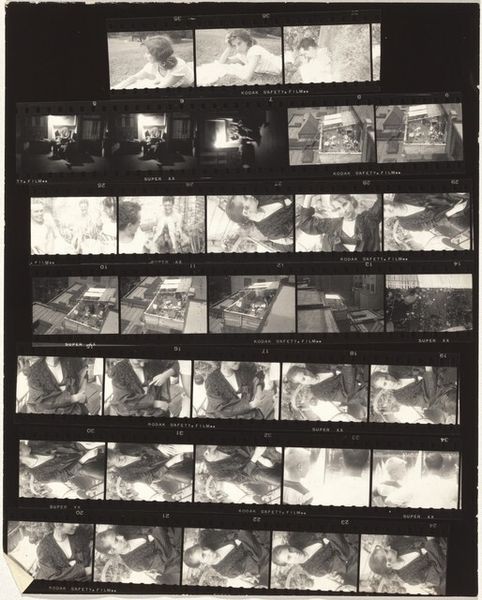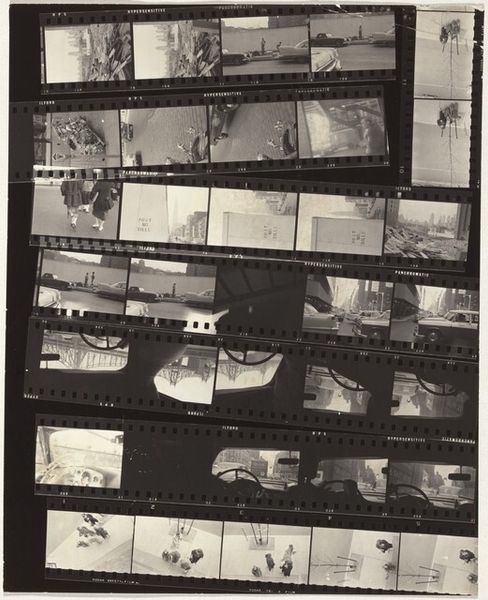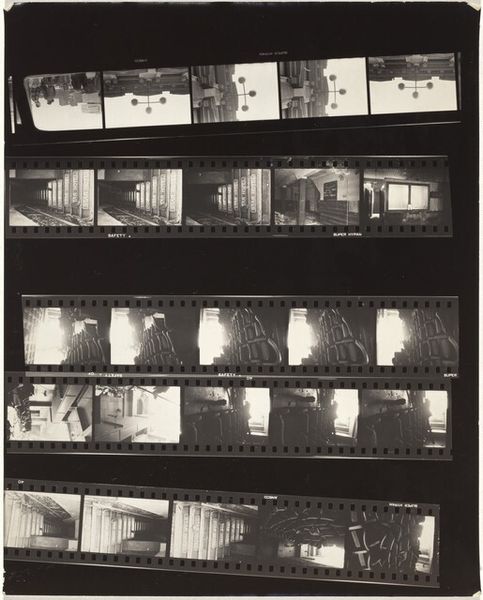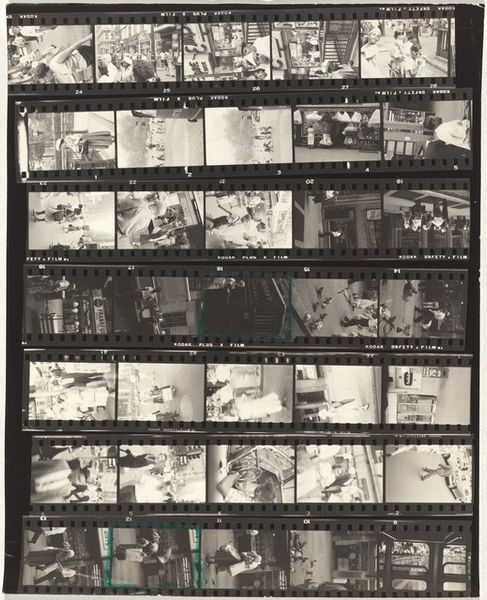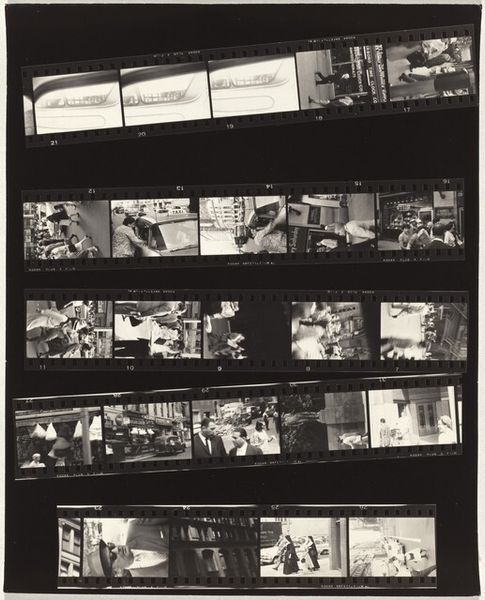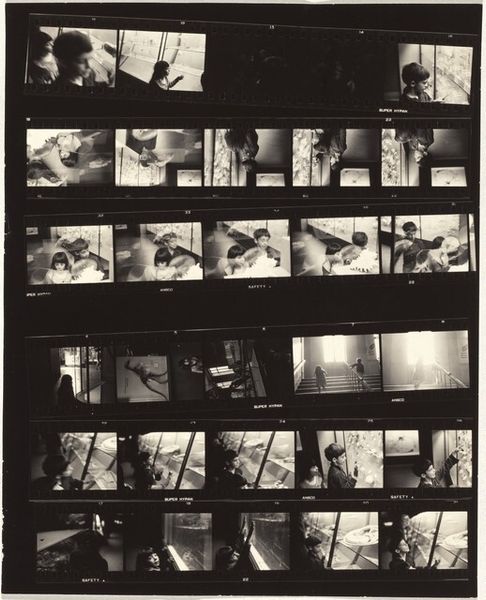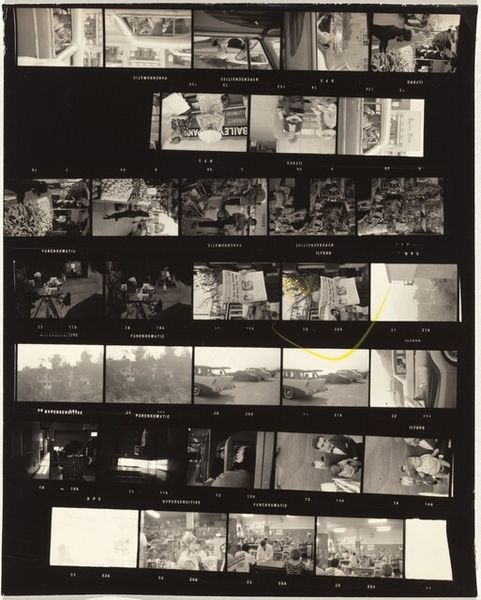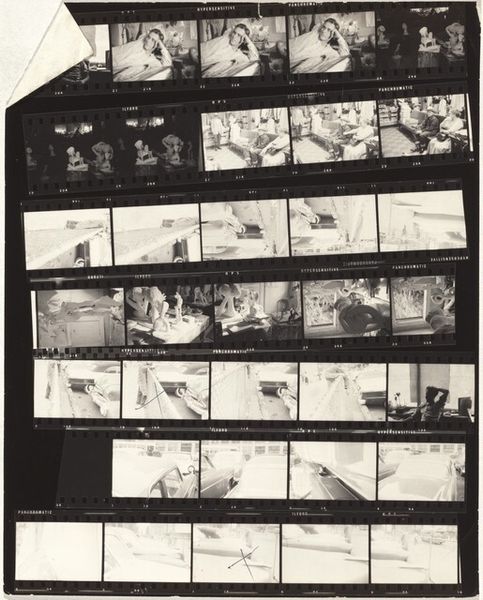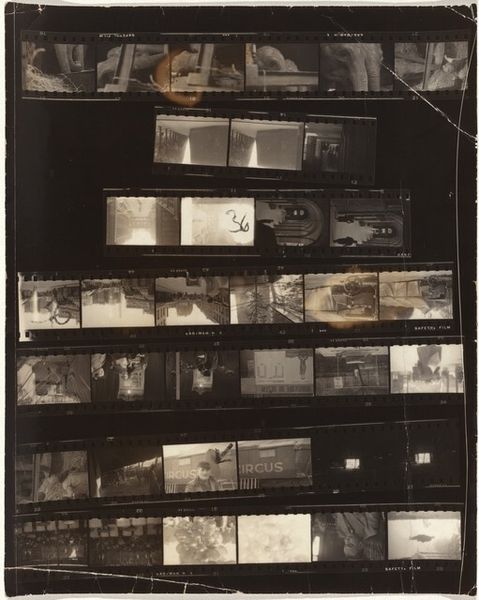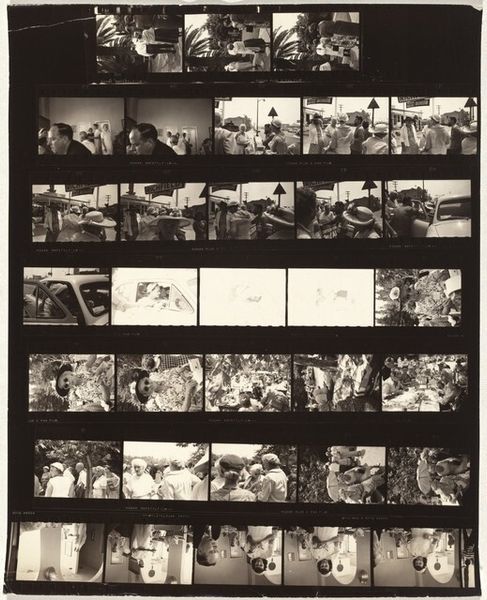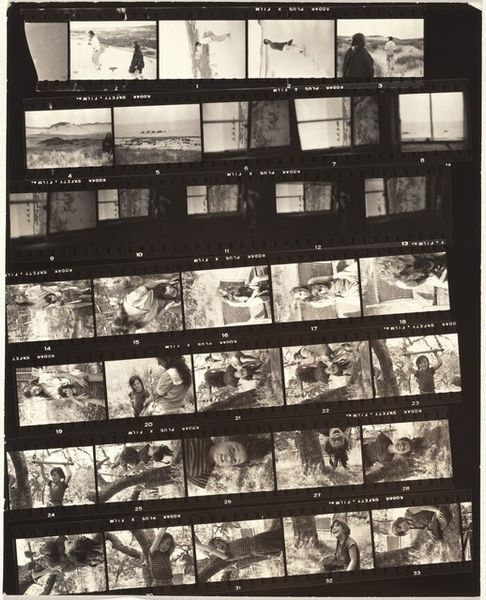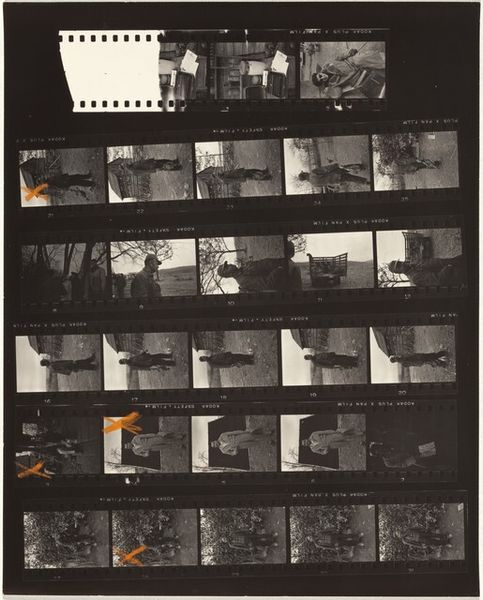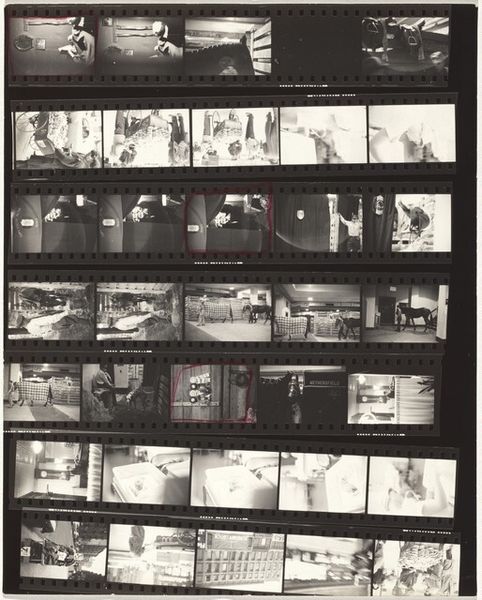
Dimensions: overall: 25.3 x 20.2 cm (9 15/16 x 7 15/16 in.)
Copyright: National Gallery of Art: CC0 1.0
Editor: This is Robert Frank’s "The Mauretania--Paris 32," a gelatin silver print from 1959. It looks like a contact sheet of several different exposures taken, probably on a street somewhere. The various framings, all crammed onto the same piece, almost feel like different takes in a film strip, a sequence of gestures and actions. What do you make of Frank presenting his images this way? Curator: Oh, it’s brilliant, isn't it? I feel like I'm peering over Frank’s shoulder in the darkroom. It’s raw, intimate. Frank wasn’t interested in hiding the process; he embraced the messy, imperfect reality of photography. You see those seemingly mundane street scenes. He's trying to expose some profound beauty or some universal truths buried beneath. Editor: Universal truths? Really? I see a chaotic composition, a departure from typical notions of carefully framed “street photography.” Curator: Precisely! Think about it. What is more truthful? A pristine, posed shot, or a glimpse into the artist's unfiltered journey, a tapestry of moments caught on film? Each frame jostles against the other, creating a restless energy, mirroring the frenetic pace of city life. There’s a feeling of spontaneity and discovery; he's searching. Editor: So, the artistic choice isn't about perfection but about honest presentation, including the accidental? Curator: Precisely! It’s almost like he's saying, "Here's how I see the world, with all its flaws and fragmented beauty. Take it or leave it." And in that, lies its strength. He turned something quite conventional like a filmstrip into a moving artwork about truth and perspective. What's your takeaway? Editor: That the magic might not always be in the perfect shot, but also in the showing. A way to create art using honesty about the process!
Comments
No comments
Be the first to comment and join the conversation on the ultimate creative platform.
